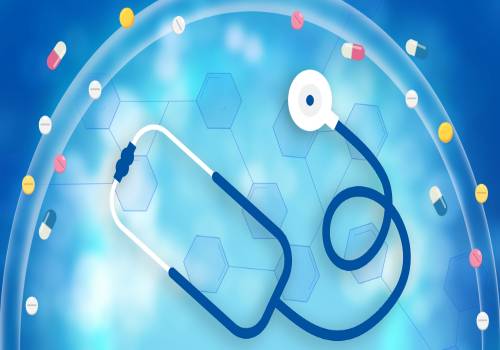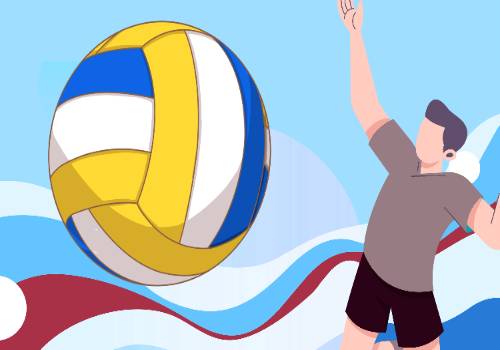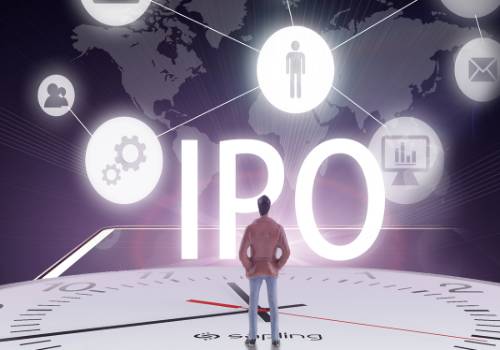
EuropeanContextoftheScientificRevolutionTheScientificRevolutionrepresentsaturningpointinworldhistory
哔哩哔哩 2023-05-01 11:01:29
European Context of the Scientific Revolution
The Scientific Revolution represents a turning point in world history. By 1700 European scientists had overthrown the science and worldviews of the ancient philosophers: Aristotle and Ptolemy. Europeans in 1700 lived in a vastly different intellectual world than that experienced by their predecessors in, say, 1500. The role and power of science, as a way of knowing about the world and as an agency with the potential of changing the world, likewise underwent profound restricting as part of the Scientific Revolution.
The social context for science in Europe in the sixteenth and seventeenth centuries had changed in several dramatic ways from the Middle Ages (roughly, 500 C.E. to the 1400s C.E.). Advances in military technology, the European voyages of exploration, and contact with the New World altered the context in which the Scientific Revolution unfolded. The geographical discovery of the Americas generally undermined the closed Eurocentric cosmos of the later Middle Ages, and the science of geography provided a stimulus of its own to the Scientific Revolution. With an emphasis on observational reports and practical experience, new geographical discoveries challenged accepted knowledge. Cartography (mapmaking) thus provided exemplary new ways of learning about the world in general, ways self-evidently superior to mastering established doctrines from dusty books. Many of the scientists of the Scientific Revolution seem to have been involved in one fashion or another with geography or cartography.
 (资料图片仅供参考)
(资料图片仅供参考)
In the late 1430s, Johannes Gutenberg, apparently independently of the development of woodblock printing in Asia, invented printing with movable type, and the spread of this powerful new technology after 1450 likewise altered the cultural landscape of early modern Europe. The new medium created a revolution in communications that increased the amount and accuracy of information available and made copying of books by scribes obsolete. Producing some 13,000 works by 1500, printing presses spread rapidly throughout Europe and helped to break down the monopoly of learning in universities and to create a new group of nonreligious intellectuals. Indeed, the first printshops became something of intellectual centers themselves, with authors, publishers, and workers collaborating in unprecedented ways in the production of new knowledge. Renaissance humanism, that renowned philosophical and literary movement emphasizing human values and the direct study of classical Greek and Latin texts, is hardly conceivable without the technology of printing that sustained the efforts of learned humanists. Regarding science, the advent of printing and humanist scholarship brought another wave in the recovery of ancient texts. Whereas Europeans first learned of ancient Greek science largely through translations from the Arabic in the twelfth century, in the later fifteenth century scholars brought forth new editions from Greek originals and uncovered influential new sources, notably the Greek mathematician Archimedes. Similarly, printing disseminated previously obscure handbooks of technical and magical secrets that proved influential in the developing Scientific Revolution.
Particularly in Italy, the revival of cultural life and the arts in the late fourteenth and fifteenth centuries commonly known as the Renaissance must also be considered as an urban and comparatively secular phenomenon, aligned with courts and courtly patronage but not with the universities, which were religiously base. One associates the great flourish of artistic activity of the Renaissance with such talents as Donatello, Leonardo da Vinci, Raphael, and Michelangelo. In comparison with medieval art, the use of perspective—a projection system that realistically renders the three dimensions of space onto the two dimensions of a canvas—represents a new feature typical of Renaissance painting, and through the work of Leon Battista Alberti, Albrecht Durer, and others, artists learned to practice mathematical rules governing perspective. So noteworthy was this development that historians have been inclined to place Renaissance artists at the forefront of those uncovering new knowledge about nature in the fifteenth and sixteenth centuries. Whatever one may make of that claim, early modern artists needed accurate knowledge of human muscular anatomy for lifelike renditions, and an explosion of anatomical research in the Renaissance may be attributed to this need in the artistic community.
【Paragraph 1】The Scientific Revolution represents a turning point in world history. By 1700 European scientists had overthrown the science and worldviews of the ancient philosophers: Aristotle and Ptolemy. Europeans in 1700 lived in a vastly different intellectual world than that experienced by their predecessors in, say, 1500. The role and power of science, as a way of knowing about the world and as an agency with the potential of changing the world, likewise underwent profound restricting as part of the Scientific Revolution.
1. The word “profound” in the passage is closet in meaning to
A. frequent
B. intense
C. challenging
D. careful
2. According to paragraph 1, what was new about the intellectual world of 1700?
A. Scientists were aware that they were participating in a turning point in world history. B. Beliefs about nature developed by ancient philosophers were no longer accepted.
C. People believed that science had changed the world.
D. The impact of the Scientific Revolution was being felt in all aspects of European life.
【Paragraph 2】The social context for science in Europe in the sixteenth and seventeenth centuries had changed in several dramatic ways from the Middle Ages (roughly, 500 C.E. to the 1400s C.E.). Advances in military technology, the European voyages of exploration, and contact with the New World altered the context in which the Scientific Revolution unfolded. The geographical discovery of the Americas generally undermined the closed Eurocentric cosmos of the later Middle Ages, and the science of geography provided a stimulus of its own to the Scientific Revolution. With an emphasis on observational reports and practical experience, new geographical discoveries challenged accepted knowledge. Cartography (mapmaking) thus provided exemplary new ways of learning about the world in general, ways self-evidently superior to mastering established doctrines from dusty books. Many of the scientists of the Scientific Revolution seem to have been involved in one fashion or another with geography or cartography.
3. According to paragraph 2, all of the following influenced European scientific thought during the sixteenth and seventeenth centuries EXCEPT
A. progress in military technology
B. explorative journeys made by Europeans
C. views expressed in the scholarship of the Middle Ages
D. the development of cartography
【Paragraph 3】In the late 1430s, Johannes Gutenberg, apparently independently of the development of woodblock printing in Asia, invented printing with movable type, and the spread of this powerful new technology after 1450 likewise altered the cultural landscape of early modern Europe. The new medium created a revolution in communications that increased the amount and accuracy of information available and made copying of books by scribes obsolete. Producing some 13,000 works by 1500, printing presses spread rapidly throughout Europe and helped to break down the monopoly of learning in universities and to create a new group of nonreligious intellectuals. Indeed, the first printshops became something of intellectual centers themselves, with authors, publishers, and workers collaborating in unprecedented ways in the production of new knowledge. Renaissance humanism, that renowned philosophical and literary movement emphasizing human values and the direct study of classical Greek and Latin texts, is hardly conceivable without the technology of printing that sustained the efforts of learned humanists. Regarding science, the advent of printing and humanist scholarship brought another wave in the recovery of ancient texts. Whereas Europeans first learned of ancient Greek science largely through translations from the Arabic in the twelfth century, in the later fifteenth century scholars brought forth new editions from Greek originals and uncovered influential new sources, notably the Greek mathematician Archimedes. Similarly, printing disseminated previously obscure handbooks of technical and magical secrets that proved influential in the developing Scientific Revolution.
4. Paragraph 3 suggests that before 1500 the transmission of knowledge in Europe was A. stimulated by printing developments in Asia
B. dependent on collaborations between scribes and publishers
C. limited to religious intellectuals in academic settings
D. influenced by philosophical rather than literary sources
5. The author discusses “Renaissance humanism” in order to
A. demonstrate that printing presses facilitated the spread of humanistic thought
B. discuss why print shops declined as intellectual centers
C. compare the beliefs of classical humanists to the Renaissance humanists
D. emphasize the importance of the direct study of Greek and Latin texts
6. According to paragraph 3, what effect did the invention of printing have on science in Europe?
A. Scientists were able to publish books for humanists and other non-scientific intellectuals.
B. Europeans gained access to new editions of texts as well as new sources of knowledge.
C. Translations of Arabic texts documenting scientific discoveries became widely available.
D. Humanistic study declined as a result of the advance of scientific study.
【Paragraph 4】Particularly in Italy, the revival of cultural life and the arts in the late fourteenth and fifteenth centuries commonly known as the Renaissance must also be considered as an urban and comparatively secular phenomenon, aligned with courts and courtly patronage but not with the universities, which were religiously base. One associates the great flourish of artistic activity of the Renaissance with such talents as Donatello, Leonardo da Vinci, Raphael, and Michelangelo. In comparison with medieval art, the use of perspective—a projection system that realistically renders the three dimensions of space onto the two dimensions of a canvas—represents a new feature typical of Renaissance painting, and through the work of Leon Battista Alberti, Albrecht Durer, and others, artists learned to practice mathematical rules governing perspective. So noteworthy was this development that historians have been inclined to place Renaissance artists at the forefront of those uncovering new knowledge about nature in the fifteenth and sixteenth centuries.Whatever one may make of that claim, early modern artists needed accurate knowledge of human muscular anatomy for lifelike renditions, and an explosion of anatomical research in the Renaissance may be attributed to this need in the artistic community.
7. According to paragraph 4, Renaissance artistic contributed to the Scientific Revolution by
A. reviving medieval mathematical and scientific sources for study
B. establishing institutions for the study of mathematics and scientific principles in art
C. creating paintings that contributed to the wealth of the courts and courtly patronage of science
D. using mathematical information to realistically represent space in art
8. Which of the sentences below best expresses the essential information in the highlighted sentence in the passage? Incorrect choices change the meaning in important ways or leave out essential information.
A. Early modern artists claim to have uncovered new knowledge about nature and human muscular anatomy before the explosion of anatomical research.
B. Artists’ need for accurate knowledge in order to realistically represent the human body may have caused the sudden increase in anatomical studies in the Renaissance.
C. Whatever other claims are made about early modern art, it is accurate to state that Renaissance artists were concernedwith creating lifelike representations.
D. The need for early modern artists to create lifelike renditions developed after the explosion of anatomical research made human anatomy clear.
【Paragraph 2】■The social context for science in Europe in the sixteenth and seventeenth centuries had changed in several dramatic ways from the Middle Ages (roughly, 500 C.E. to the 1400s C.E.). ■Advances in military technology, the European voyages of exploration, and contact with the New World altered the context in which the Scientific Revolution unfolded. The geographical discovery of the Americas generally undermined the closed Eurocentric cosmos of the later Middle Ages, and the science of geography provided a stimulus of its own to the Scientific Revolution. ■With an emphasis on observational reports and practical experience, new geographical discoveries challenged accepted knowledge. Cartography (mapmaking) thus provided exemplary new ways of learning about the world in general, ways self-evidently superior to mastering established doctrines from dusty books. ■Many of the scientists of the Scientific Revolution seem to have been involved in one fashion or another with geography or cartography.
9. Look at the four squares【■】that indicate where the following sentence can be added to the passage.
Given the advantages these new approaches offered, it is hardly surprising that sciences associated with exploration attracted great intellectual interest.
Where would the sentence best fit?
10. 【Directions】An introductory sentence for a brief summary of the passage is provided below. Complete the summary by selecting the THREE answer choices that express the most important ideas in the passage. Some answer choices do not belong in the summary because they express ideas that are not presented in the passage or are minor ideas in the passage. This question is worth 2 points.
The geographical discovery of the Americas, the technology of printing, and the revival of cultural life and the arts all contributed to the Scientific Revolution.
●
●
●
Answer Choices
A. The discovery of the Americas stimulated the science of geography and cartography which in turn emphasized observation and practical experience.
B. The invention of movable type increased the accuracy and availability of information, and a new group of nonreligious scholars emerged.
C. The growth of both artistic and scientific activity in Renaissance Italy was encouraged by the financial support of universities and wealthy merchants.
D. Johannes Gutenberg’s invention of printing in the late 1430s appears to have been unrelated to earlier developments in print technology in Asia.
E. European intellectuals first discovered the existence of ancient Greek science and mathematics texts in the late fifteenth century, when translations from the Arabic finally became available.
F. The revival of culture and art in fourteenth-century Italy encouraged the development of perspective and the adherence to mathematical rules in painting.

EuropeanContextoftheScientificRevolutionTheScientificRevolutionrepresentsaturningpointinworldhistory

以正能量引领亿万流量,用主旋律奏响奋进乐章。

内存缓存是将数据存储在内存中的一种缓存实现方式。由于内存比磁盘更快,因此内存缓存通常比文件或数据库缓

在一次工作中,管益辉发现复兴号、和谐号动车组的轮对轴箱存在加工效率低、返工率高、自主生产率低、检修成

但随着大数据分析、管理技术和网络安全成为就业增长的最大推动力,未来五年大多数技术的净影响将是积极的

今天来聊聊关于中国最大的火车站是哪里的,中国最大的火车站是哪里的文章,现在就为大家来简单介绍下中国最

237 每一次成长都是独一无二的,就是因为这些无可替代的情感积累,才能逆转成巨大的力量吧。——纳西妲238

自2019年以来,存储产品就一直价格走低,连续跌价3年后,现在的库存越来越多,而在消费市场中,内存、SSD已

文 欧阳斌最近,淄博烧烤出奇的火爆。在五一假期临近之际,淄博市文化和旅游局更是“火上浇油”,向游客朋

1、b超的价格是由部位决定的,每个部位的收费是不一样的,根据当地的经济发展和被检查医院的水平,价格也是

前言4月12日,派能科技(股票代码:688063)发布《上海派能能源科技股份有限公司2022年年度报告摘要》。派

1、作为最新的网络用语,白莲花通常指的是 "圣母白莲花“,指小说中某些高贵冷艳有着所有主角配角难以抵抗

整装是什么意思,正装是什么这个很多人还不知道,现在让我们一起来看看吧!1、一、什么是“正装” 很多企

雷科防务(002413)04月30日在投资者关系平台上答复了投资者关心的问题。

4月30日,记者从省文旅厅获悉,“五一”长假第二天,截至下午15点,全省纳入统计的829家A级旅游景区共接待